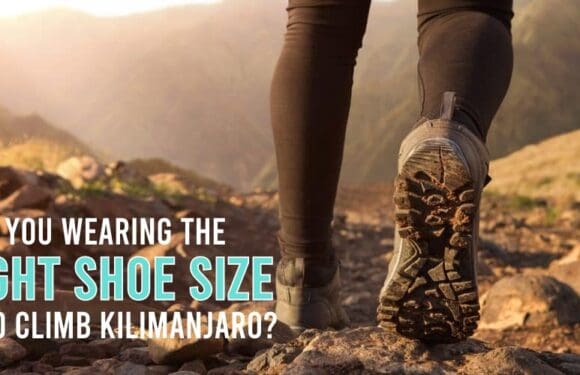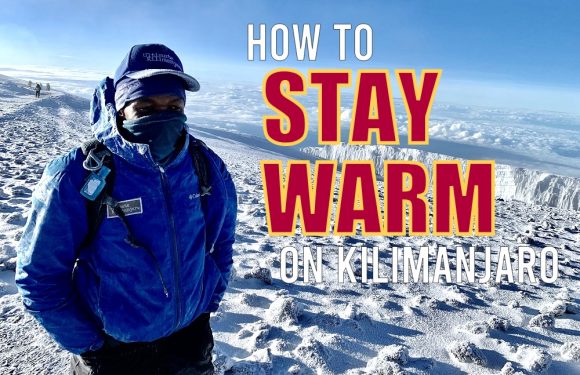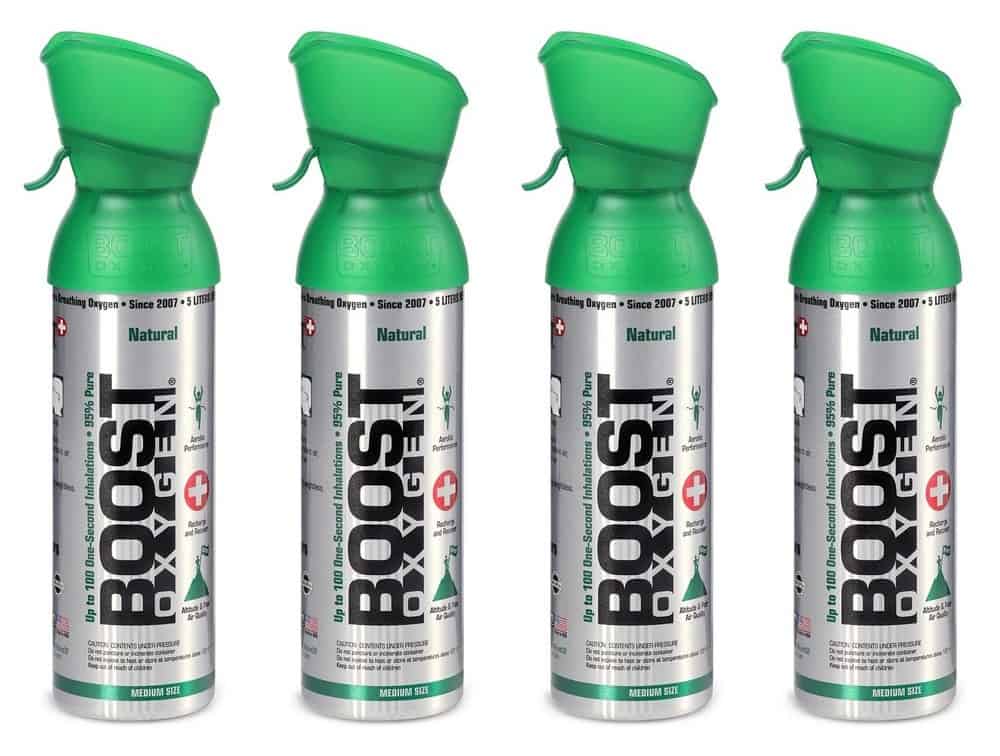
In recent years, canned oxygen, particularly Boost Oxygen, has become more popular as a potential treatment for people traveling at high altitude.
In this article, we’ll examine how effective Boost is in treating altitude sickness and whether you should consider using it on a Kilimanjaro climb.
Altitude Sickness: A Closer Look
Altitude sickness manifests when the body cannot obtain enough oxygen from the air at high elevations.
Symptoms of altitude sickness typically appear within 6 to 24 hours after reaching elevations above 8,200 feet (2,500 meters). Most people climbing Kilimanjaro, which is 19,341 feet (5,895 meters) tall, experience mild symptoms at some point in their expedition. However, the onset and severity can vary widely based on individual susceptibility, rate of ascent, and altitude reached. The symptoms can range from mild discomfort to severe conditions that require immediate medical attention.

The traditional approach to dealing with altitude sickness emphasizes gradual acclimatization and, in some cases, medication. Against this backdrop, the emergence of canned oxygen as a potential solution has sparked debate within the mountaineering and medical communities.
What is Boost Oxygen?
Boost Oxygen is a brand of portable, recreational oxygen canisters intended for non-medical use.
Marketed as a quick remedy for altitude sickness, these cans promise to deliver a high concentration of oxygen (the cans contain 95% pure oxygen) to alleviate the symptoms associated with low oxygen levels at high altitudes. It also claims to improve sports performance, increase energy levels, and provide relief from various environmental factors like air pollution.
The disclaimer on the Boost Oxygen website states, “95% Pure Boost Oxygen is for recreational purposes only, ideal for athletes and sports enthusiasts, older adults, and people at high altitude or in poor air quality. No prescription is needed to purchase Boost Oxygen.”
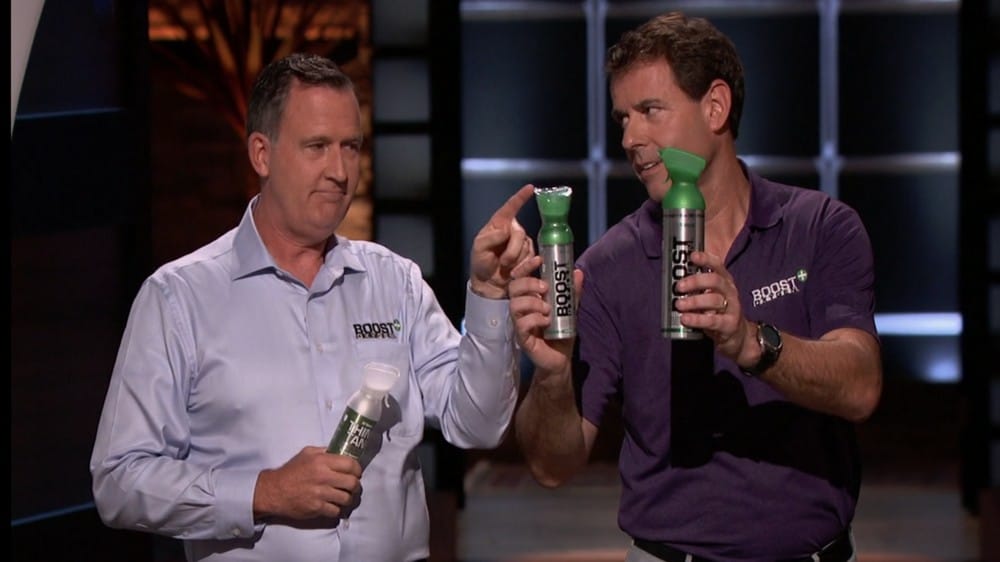
The company, which was featured on the hit show Shark Tank in 2019, has been highly successful. Their products are available in stores like CVS, Walmart, Kroger, Bass Pro Shops, and Dick’s Sporting Goods. The projected sales for 2023 is $50 million.
Boost Oxygen is available in various sizes and sometimes comes with natural essential oil aromas, such as peppermint. It’s designed for easy inhalation through a mouthpiece or mask attached to the canister.
Boost Oxygen is not FDA-approved for medical treatment.
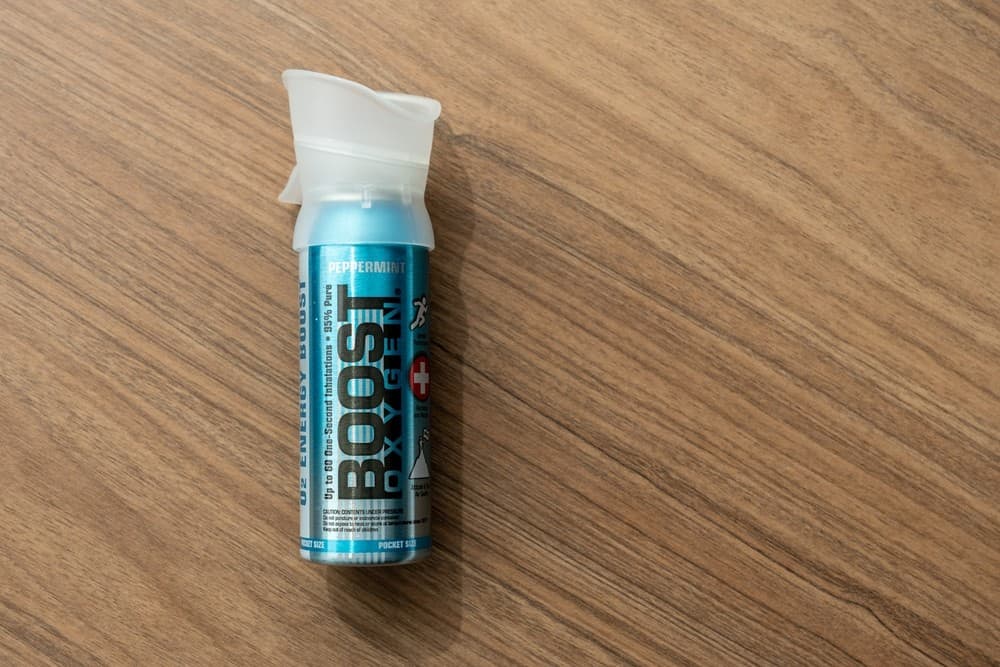
What Medical Professionals Say About Boost Oxygen
Despite the strong marketing behind Boost Oxygen and similar products, the scientific foundation supporting their claims is thin. The primary issue lies in the discrepancy between the method of oxygen delivery provided by these cans and the body’s needs in high-altitude conditions. The intermittent bursts of oxygen offered by these products may not significantly impact the body’s overall oxygen saturation levels.
The consensus among medical professionals is clear: there is scant evidence to suggest that canned oxygen can effectively prevent or treat altitude sickness. The physiology of altitude adaptation involves complex mechanisms that cannot be bypassed with simple solutions. This skepticism is rooted in a deep understanding of how the body responds to high-altitude environments and the limitations of supplemental oxygen in these contexts.
While some individuals report feeling better after using canned oxygen, this improvement is likely attributable to the placebo effect rather than any physiological change. This false sense of security can lead to dangerous decisions, such as ascending further despite the onset of altitude sickness symptoms. The use of canned oxygen actually hinders the acclimatization process, because it delays the body’s natural adaptation to the altitude.
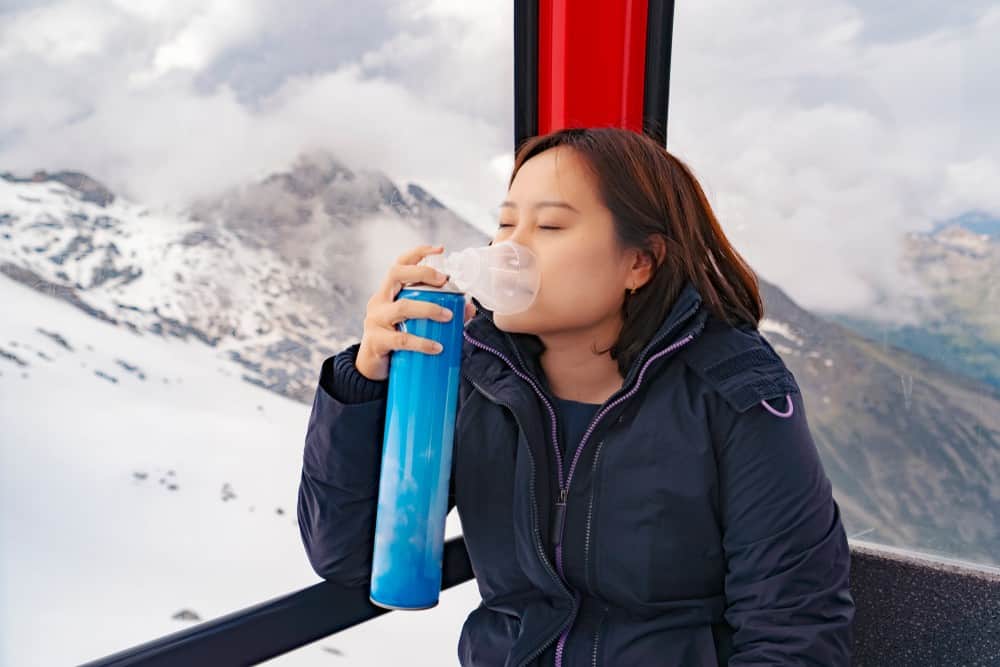
What Research Says About Supplemental Oxygen
One study on supplemental oxygen examined its effect on soccer players. 12 professional soccer players performed two bouts of exhaustive exercise separated by 5 minutes of rest. During the recovery period, the subjects breathed either room air or 100% oxygen, assigned by randomized, double-blind design. The entire procedure was repeated on each subject using the opposite gas. The administration of enriched oxygen during the recovery period had no effect on plasma lactate levels or on performance during the second period of exercise. The subjects were unable to identify which gas they received. In conclusion, data from this study indicate that using 100% oxygen applied for short periods offers no advantage on recovery or exercise performance.
Another study tested whether supplemental oxygen speeds recovery or enhances subsequent performance on a treadmill. 13 male athletes ran in two 5-min submaximal efforts followed by a single bout to exhaustion. Intervals of exercise were separated by a 4-min recovery period during which the subject breathed either 1) room air, 2) 100% oxygen, or 3) 2 min of 100% oxygen followed by 2 min of room air on three nonconsecutive days. They found that breathing 100% oxygen produced no significant difference on the recovery kinetics of minute ventilation or heart rate, or improvement in subsequent performance as measured by duration of exercise and peak VO2. In addition, the perceived magnitude of exertion was no different during oxygen breathing.
Acclimatization and Prevention Strategies

At high elevations, the barometric pressure decreases, reducing the amount of oxygen available in the air. This reduction challenges the body’s ability to maintain optimal oxygen levels in the bloodstream, a critical factor in preventing altitude sickness. While canned oxygen might offer a temporary boost, it cannot replicate the body’s need for a continuous oxygen supply.
The key to safely enjoying high-altitude adventures lies in proper acclimatization. This process allows the body to gradually adjust to lower oxygen levels, reducing the risk of altitude sickness. Strategies include a slow ascent rate, adequate hydration, and avoidance of alcohol and sedatives. For those prone to altitude sickness, medications like Acetazolamide (Diamox) may be recommended by healthcare providers.
The Verdict on Boost Oxygen
Ultimate Kilimanjaro does not permit the use of canned oxygen on our climbs as we consider it nearly useless at best and potentially harmful at worst.
The use of Boost Oxygen should not be considered as an effective method for preventing or treating altitude sickness, on Mount Kilimanjaro or anywhere else. Its benefits, if any, are severely limited by the nature of its delivery system and the physiological demands of high-altitude environments. Climbers and adventurers should prioritize time-tested methods of acclimatization when planning high-altitude excursions.
While the promise of a quick fix in the form of canned oxygen is enticing, the evidence suggests a more cautious approach. By respecting the body’s natural adaptation processes and following established safety protocols, climbers can ensure their experiences are safe.
5 Medications that Help Acclimatization & Combat Altitude Sickness




















































